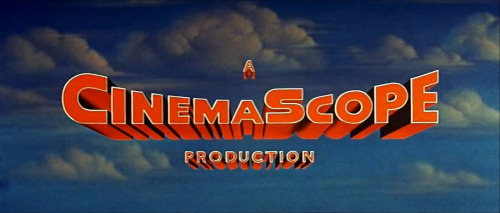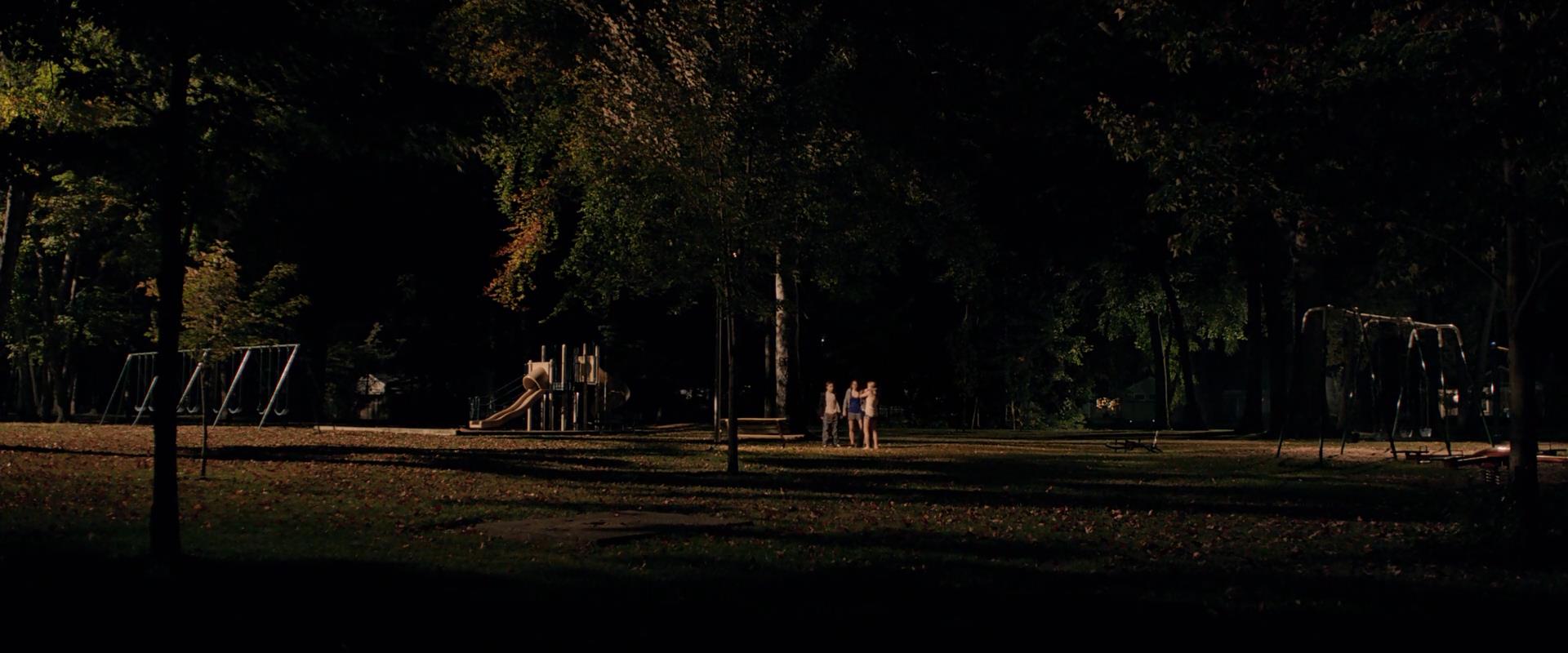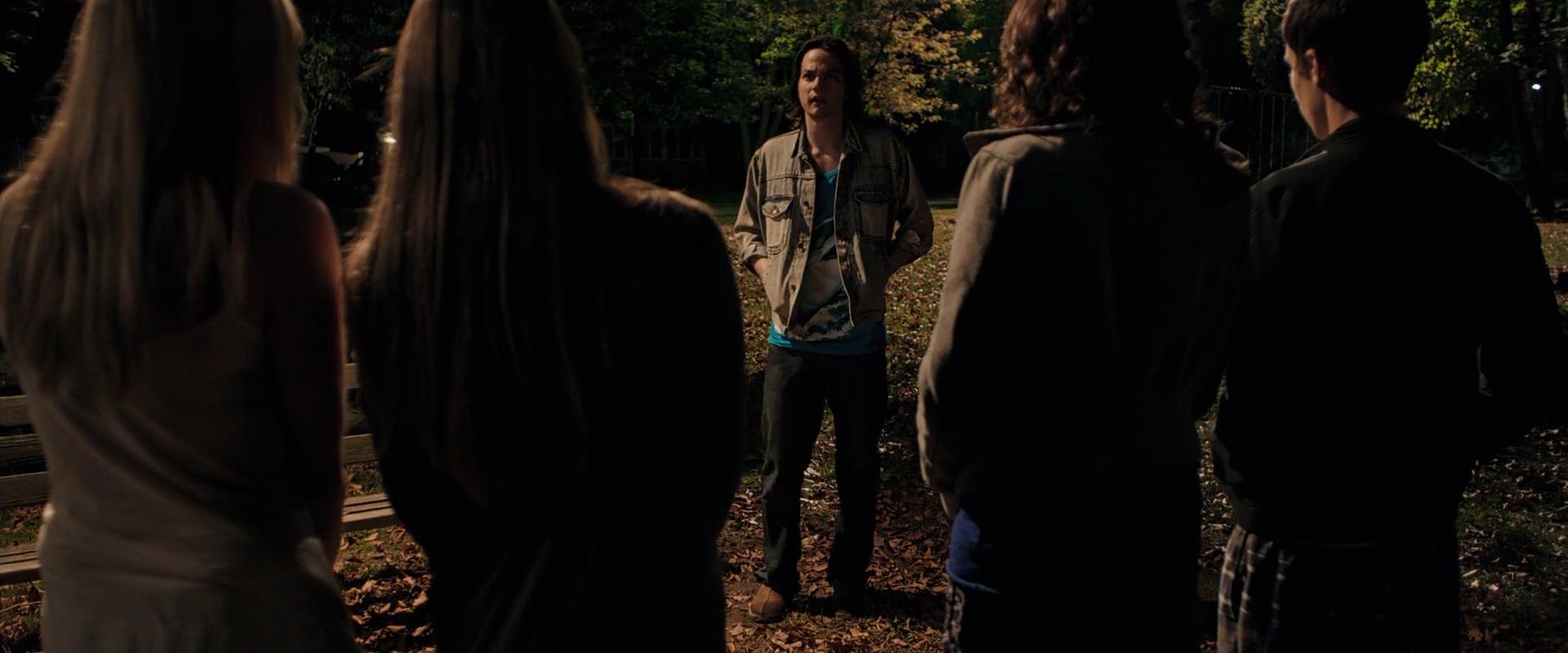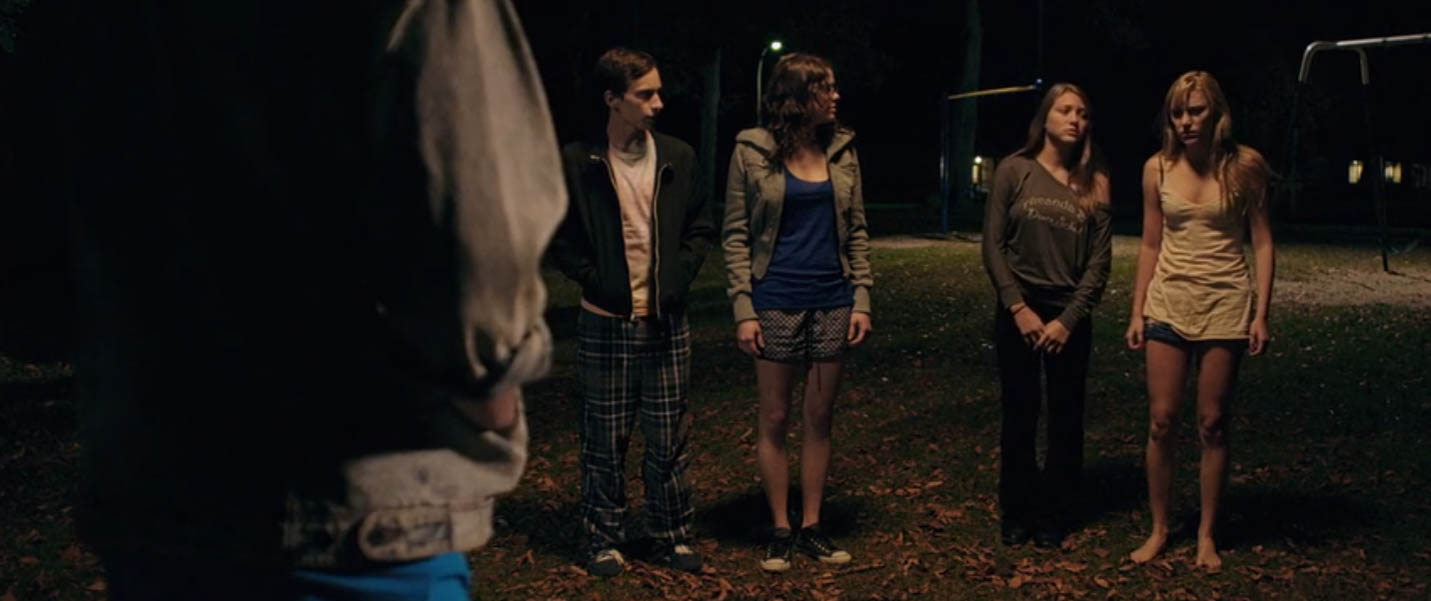Don't Just Stand There, Do Something!
One of my favorite essays film theorist David Bordwell has ever written is this one on the development of CinemaScope.[ref]There's a video version here.[/ref] Some technical details and some history: The shape of a movie's image is called its aspect ratio, which refers to the relationship between height and width. You might see this given as a decimal, like 1.6666, or a ratio, like 16:9. An aspect ratio of 1.66 means the picture is 1.66 times as wide as it is tall.
In the early days of silent movies, the aspect ratio that filmmakers settled on was what we'd call 4:3, or 1.33:1. This held all the way through the 1950s, when television took the same aspect ratio and started stealing audiences.
The movies countered by developing image systems that TV couldn't replicate. There was color, there was 3D[ref]With the red and green glasses.[/ref], but the most successful development was widescreen imaging.
 Enter CinemaScope: Instead of cropping the top and bottom of the image to produce a wider aspect ratio, say 1.66, CinemaScope used special lenses to squeeze the image onto a 1.33:1-shaped piece of film. When the film was run through the projector, another lens unsqueezed the image into its proper dimensions, a 2.65 aspect ratio.
Enter CinemaScope: Instead of cropping the top and bottom of the image to produce a wider aspect ratio, say 1.66, CinemaScope used special lenses to squeeze the image onto a 1.33:1-shaped piece of film. When the film was run through the projector, another lens unsqueezed the image into its proper dimensions, a 2.65 aspect ratio.
All this is greatly simplified, but you get the point.
There was pushback at first: Fritz Lang is quoted as saying the long and narrow frame was only good for filming "snakes and funerals." Also, the system didn't always work too well. Among other problems, if you got too close to an actor's face, you'd give them distorted "mumps."
This removed the sharpest tool in the toolbox. Quoth DB:[ref] Poetics of Cinema, CinemaScope: The Modern Marvel You See Without Glasses. Pp 294[/ref]
...directors wanted facial close-ups in order to provide an emotional accent, to punch up a drab scene, or to cover continuity gaps. Producers wanted close-ups because they showed off the cast and allowed scenes to be recut in postproduction. Actors wanted close-ups because they were actors. The industry remained skeptical of a camera process that couldn't get within 7 feet of a star.
Without close-ups, filmmakers had to rethink how they staged scenes. Placing actors in a row, as if hanging on a clothesline, had been around since the silent era, but the wider image encouraged it. Think of a dozen cowboys at the bar in a saloon. This can look unnatural if everyone's supposed to be talking to each other. While the optics eventually improved, this clothesline staging is an easy solution to fall back on, even today.
Which brings me to the movie It Follows.
In particular, to a scene about 40 minutes into the film, when Jay flees the monster following her to a playground in the middle of the night. There's a short sequence where she sits on a swing, looking around at the shadowy trees surrounding her.
When her friends and sister find Jay, she runs toward them. I really like this long shot:
Not long afterward, Jay's neighbor Greg also shows up, and the scene just plays out where everyone's standing. Jay and her friends stand in a line, facing Greg. They recite their lines, and then Greg leaves.[ref]DB calls this "Stand and Deliver" staging (often "Sit and Deliver"). Contrast it with that other hallowed staging solution, "Walk and Talk."[/ref]
It's not bad, but I see a missed opportunity. Playgrounds are wonderful spaces because there's so much to do. Actors can be given activities to perform that are much more  interesting to look at than people standing in a row. And preoccupying someone with business can improve a self-conscious performance.[ref]Not that that's really a problem here.[/ref]
interesting to look at than people standing in a row. And preoccupying someone with business can improve a self-conscious performance.[ref]Not that that's really a problem here.[/ref]
What if Jay kept sitting on the swing? Or returned to it after greeting her friends? What if someone sat at (or better yet, on) the picnic table that's right next to them? Jay's friend Yara and love interest Paul are almost forgotten about- they could be set in the background, maintaining their presence in the scene, while Jay, Kelly, and Greg have their conversation.
The realists among you will protest that groups of people will stand in misshapen circles and chat like that. Yeah, they do. Sometimes people talk while doing other things, too. This staging might've been a deliberate choice for the filmmakers. It's just not my taste.
staging might've been a deliberate choice for the filmmakers. It's just not my taste.
When you think about it, the widescreen frame is a strange shape to make images of people.[ref]Hence, "Snakes and funerals."[/ref] It's easier to get a shot that looks good in the more square 1.33. It Follows doesn't do itself any favors by using 2.35, the widest aspect ratio in common use today.
Ensemble staging can take more careful planning, and won't always give you flexibility in postproduction, but it's still worth trying. Keep an eye out next time you see a movie where the characters just have to stand in one spot and say their lines. I think we should let them inhabit the space- let them be people.
